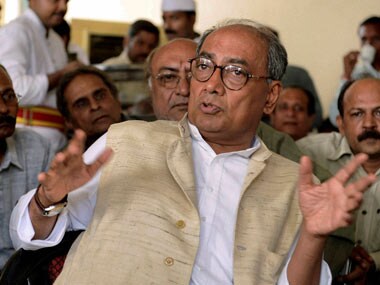This morning, Digivijay Singh was busy on twitter, hanging television audience measurement company TAM India while ensuring that his updates stayed on the right side of defamation or libel laws.
The first tweet was this one:
Singh takes care not to accuse TAM of gaming the ratings, asking, seemingly innocuously and innocently, whether TAM was paid to rig the ratings. Singh follows this up with a reference to the NDTV-TAM imbroglio and to Zee’s unhappiness with the organisation:
.
Singh’s update takes care not to mention the facts, which are:
* TAM was not sued by NDTV; Kantar Group Limited , Neilsen Holdings, et al were
* The case was thrown out by the New York Supreme Court.
Details of the NY Court judgment can be read here .
Digvijay Singh follows this up with a third tweet. This one doesn’t mention TAM.
There can be no argument that the sample size needs to be substantial. But Singh’s next statement is confusing, to say the least. “No company can have a monopoly,” he says.
There is no monopoly in measurement - any one is free to start a measurement company to compete with TAM. Indeed, others have tried. Audience Measurement & Analytics Limited (aMap) was created in 2004, offering customers next day measurement (which TAM did not and does not offer). That aMap did not succeed has nothing to do with anyone having a monopoly.
[caption id=“attachment_1336683” align=“alignleft” width=“380”]
 Digvijaya goes after TAM: PTI[/caption]
Digvijaya goes after TAM: PTI[/caption]
Is it Singh’s case that there should be at least two companies measuring TV audiences in India? When BARC is ready with their measurement product, will BARC, too, in Singh’s view, become a monopoly?
Singh’s twitter updates make for interesting reading in the context of recent developments. The Union Cabinet last week approved the proposal of the Ministry of Information and Broadcasting (MIB) for bringing out a comprehensive regulatory framework in the form of guidelines for Television Rating Agencies in India.
One of the key points in the framework pertains to ownership. “No single company / legal entity either directly or through its associates or interconnect undertakings shall have substantial equity holding that is, 10 percent or more of paid up equity in both rating agencies and broadcasters/advertisers/advertising agencies,” say the guidelines.
Since TAM India is clearly a WPP-owned company and WPP, to put it mildly has substantial interests in advertising agencies, TAM India is disqualified unless their ownership is changed within 30 days from the date of the Union Cabinet approval.
To use Digvijay Singh’s device, “Is it a fact that the clause on ownership and the 30 day deadline were included as a result of Digvijay Singh’s animus to TAM?”
Anant Rangaswami was, until recently, the editor of Campaign India magazine, of which Anant was also the founding editor. Campaign India is now arguably India's most respected publication in the advertising and media space. Anant has over 20 years experience in media and advertising. He began in Madras, for STAR TV, moving on as Regional Manager, South for Sony’s SET and finally as Chief Manager at BCCL’s Times Television and Times FM. He then moved to advertising, rising to the post of Associate Vice President at TBWA India. Anant then made the leap into journalism, taking over as editor of what is now Campaign India's competitive publication, Impact. Anant teaches regularly and is a prolific blogger and author of Watching from the sidelines. see more
)